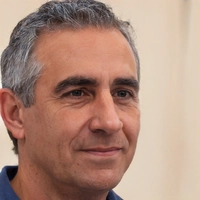
Is DC Pandey Enough for NEET? A Straight-Up Look
If you're knee-deep in NEET prep, you probably keep hearing one name for physics: DC Pandey. It's everywhere—coaching centers, WhatsApp groups, seniors telling you that's all you need. But is it really enough? Or are you risking your seat by sticking to only DC Pandey?
Here's the deal: DC Pandey is kind of the go-to for NEET aspirants because it's written in a way that's actually understandable. No showing off, no confusing language, just plain explanations and a truck-load of practice questions. That alone makes it dangerous to ignore. But hold up—before you dump every other resource in the bin, let's actually look at what it covers and where it might leave you hanging.
Most NEET questions don’t demand you be an Einstein, but they do expect you to be fast and accurate with basics. DC Pandey gets you there with loads of problems, especially for foundational concepts. But NEET keeps changing—it’s not always just direct formula application. Sometimes the questions twist familiar concepts just enough to catch you off guard.
- What Makes DC Pandey Stand Out?
- How NEET Physics Really Works
- DC Pandey: Strengths and Shortfalls
- Smart Tips to Use DC Pandey Effectively
- Should You Pair DC Pandey With Other Books?
What Makes DC Pandey Stand Out?
The first thing anyone will tell you about this physics book is how NEET-friendly it is. DC Pandey’s whole approach is built for medical aspirants, not engineers or anyone else. The language is simple. You want examples? They're everywhere. You get stepwise solutions, so you rarely feel lost, even with the nastier problems.
One standout feature is the way topics are broken down. Every chapter starts with the concepts, then hits you with solved examples, and follows up with a range of practice questions. There's a mix of objective questions, assertion-reason, and even old NEET questions tossed in. This gives you a firm grip on question patterns and builds confidence, especially if you’re not a natural at physics.
- Questions are often sorted by difficulty, so you know when you’ve mastered the basics and when you’re ready for the tricky stuff.
- Targeted practice for NEET, meaning you don’t waste hours on topics that almost never show up in the exam.
- Summaries and tips at the end of each chapter, so you get those quick last-minute revision points.
Want some hard numbers? Check out this comparison of DC Pandey with other popular physics books:
| Book | Past NEET Ques Included | Concept Clarity | Question Count (avg/chapter) | suited for NEET? |
|---|---|---|---|---|
| DC Pandey | Yes | High | 120+ | Yes |
| HC Verma | Some | Very High | 60-80 | Good, but tough |
| Pradeep’s | No | Medium | 90-100 | General use |
Notice where DC Pandey shines? It's super focused on what matters for NEET. No, it's not about showing off your physics genius—it's about nailing the MCQs that actually show up on your paper.
Another plus? The latest editions often include scanned NEET trends and updates, so you’re not stuck prepping from last decade’s pattern. This is crucial, because NEET changes things up every couple of years just to keep everyone on their toes.
How NEET Physics Really Works
Anybody aiming for NEET knows the physics section isn’t just about remembering formulas. It’s about spotting sneaky traps, picking the fastest method, and not getting fooled by twisted concepts. You’re juggling both theory and practical problem-solving, all under time pressure. A lot of students think mugging up facts will do it, but NEET loves mixing basics with unexpected turns.
Out of 180 marks in physics, around 40–45 questions show up each year. The split is pretty even between Class 11 and 12 topics, but mechanics, electricity, and magnetism eat up most of the marks. Thermodynamics, optics, and modern physics also pop up often. Take a look at how things usually spread out:
| Topic | Weightage (%) |
|---|---|
| Mechanics | 30–35 |
| Electrodynamics | 20–25 |
| Modern Physics | 15–20 |
| Optics | 10–12 |
| Thermodynamics | 10–12 |
A lot of the questions aren’t about complex calculations; they’re about spotting the right concept and applying it without getting lost. But speed is key—one wrong step and you could waste precious minutes or get negative marking. The NEET physics section is designed to test how well you’ve really understood the basics, not just whether you’ve seen a question before.
- Expect conceptual MCQs and numerical problems with quick calculations.
- Some questions combine more than one chapter, so you can’t just study topics in isolation.
- Diagram-based and assertion-reason type questions show up every year.
Another thing? NEET is infamous for repeating question types, not always the exact same numbers, but the same logic. Mastering the typical styles helps you guess what might turn up next time around.

DC Pandey: Strengths and Shortfalls
Let’s face it—if you’re prepping for NEET, DC Pandey probably comes up in every coaching class and topper interview. So, what’s the big appeal? First off, the book covers every topic on the NEET physics syllabus, one chapter at a time. There’s a straight-up explanation for theory, lots of solved examples, and a solid mix of objective and subjective questions at the end of each chapter.
The questions are organized by difficulty, so you won’t suddenly trip over level-99 problems right after you’ve just learned the basics. The number of MCQs is massive—about 7,000 across the whole series. That means your speed and accuracy can really hit another level if you actually solve most of them. Plus, solutions aren’t just a quick answer—they show the steps, so you don’t get stuck guessing where you messed up. The layout is friendly for quick revision before exams.
- Theory is clear and not too long-winded.
- Questions go from easy basic to tougher, so you build confidence fast.
- For most NEET-level concepts, it covers what’s expected.
- Plenty of solved examples teach you tricks and shortcuts.
But let’s talk about what’s missing. NEET doesn’t just test who can solve 100 MCQs every night; it’s about understanding how concepts can get twisted in an unfamiliar way. DC Pandey sometimes plays it safe with standard types, so truly unique problems (like the ones thrown into NEET to challenge top scorers) might be rare here.
If you compare previous NEET physics papers with the book, there’s a pattern. Basic concepts and direct-formula questions are nailed by DC Pandey, but tricky, combo-concept numericals sometimes fly under the radar. You might miss out on real ‘application-level’ questions (think multi-step, interpretation-based, or those mixing two or more chapters).
| Aspect | DC Pandey Covers | Possible Gaps |
|---|---|---|
| Basic NEET MCQs | Extensively covered | Rarely misses any |
| Mixed-concept questions | Covers some | Could use more variety |
| NEET-level Application | Above average | Tricky NEET patterns sometimes missing |
| Advanced JEE-type MCQs | Minimal (not needed for NEET) | Not a gap—actually a plus for NEET students |
Another thing: solution quality is solid, but if you’re the kind of student who needs theory explained in even more baby steps, you might want reference back-up like HC Verma or YouTube lectures. Also, practicing only from DC Pandey can sometimes lead to overconfidence—because seeing a familiar pattern feels easy, but the paper might hit you with a twist you never saw while practicing regular drills from the book.
Bottom line: DC Pandey is killer for building your foundation, speed, and accuracy on standard NEET patterns. But if you want to absolutely crush physics and grab every possible mark, mix in past-year question analysis and a handful of next-level problems from other sources.
Smart Tips to Use DC Pandey Effectively
Using DC Pandey the right way can make a big difference in your NEET physics prep. You don’t want to waste time doing random stuff with the book. Let’s nail down how to really make it work for you.
- DC Pandey is best for solidifying your basics. As you go through each chapter, don’t just jump into the solved examples—start by reading the theory. The book’s explanations are usually brief, but they cover the base concepts you need.
- Use the "Objective Questions" at the end of every chapter to check if you’ve actually understood what you read. Don’t just look at the answer key—try to solve it and write out the steps. Studies show active problem solving boosts retention by up to 70% compared to passive reading.
- The "Previous Years’ Questions" after every chapter are gold. Most NEET toppers swear by these since about 40-45% of NEET physics questions are inspired from past years. Doing these regularly makes you familiar with patterns and recurring traps.
- Don’t waste all your time on the "Challenging Problems." They’re useful but sometimes too advanced for NEET. Focus more on the "Level I and Level II" questions, as these reflect NEET’s real difficulty.
- Don’t skip the short conceptual questions, because NEET is testing your fundamentals more than anything. A lot of students realize too late that these easy-looking questions are what boost your score.
Here’s a quick look at how NEET physics questions line up with sections from DC Pandey, based on an analysis of 2024 and 2023 NEET exams:
| DC Pandey Section | Approx. % of NEET Questions Covered |
|---|---|
| Theory + Solved Examples | 50% |
| Objective (Level I & II) | 35% |
| Challenging Problems | 10% |
| Previous Years' NEET/AIPMT | 45% |
Want to keep your prep tight? Here’s a simple routine:
- Read the theory and highlight tricky points.
- Do Level I problems, then Level II right away.
- Solve previous years’ questions for that chapter before moving on.
- Review mistakes weekly and re-do those questions. Most toppers say this is what actually lifts your score.
Stick with this plan, and you’ll squeeze the most out of the book without burning out or getting lost in unnecessary details.

Should You Pair DC Pandey With Other Books?
If you’re serious about nailing the NEET physics section, here’s the harsh truth—just using DC Pandey might not get you the safest score. Sure, DC Pandey covers most concepts and gives you tons of problems, but NEET doesn’t stick to predictable patterns anymore. Recent papers have thrown in questions that felt straight out of NCERT and sometimes from the latest mock test series by big coaching institutes.
So, what extras should you actually use with DC Pandey? Here’s what top scorers and coaches recommend:
- NCERT Physics Textbook: NEET loves asking theory straight out of NCERT. Don’t skip reading and underlining examples, in-text points, and end-of-chapter summaries. Even one-liners and table values matter.
- Previous Years’ NEET Papers: Some questions literally repeat. Solving last 10 years’ NEET physics papers can help you spot patterns and important topics DC Pandey may not stress enough.
- Coaching Materials: Institutes like Allen, Aakash, and Resonance have their own sheets and modules. Even if you’re self-studying, try to get hold of their practice sheets, especially if your basics are already strong.
- Mock Test Series: Taking timed mock tests is key to building speed. Top coaching institutes’ online test series keep you in sync with the latest exam level. Analyze your mistakes—don’t just collect solved papers.
Here’s a no-nonsense way to pair DC Pandey with these resources:
- Start a chapter with NCERT. Highlight what feels important.
- Tackle the theory and questions from DC Pandey for that chapter.
- Every week, solve at least one set of previous years’ NEET questions on the topic you just studied.
- Review any topics you still get wrong using coaching modules or doubt sessions (from YouTube or friends if you aren’t in a coaching center).
Your friend who scored 170+ in physics last year wasn’t just grinding on DC Pandey. They mixed in NCERT, past papers, and tests to cover all gaps. Do that, and you’ll play it safe. Don’t rely on any one book—it’s like going into a match with only a single skill. Cover your bases and give yourself the best shot.






Write a comment